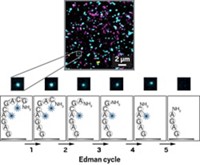Advertisement
Grab your lab coat. Let's get started
Welcome!
Welcome!
Create an account below to get 6 C&EN articles per month, receive newsletters and more - all free.
It seems this is your first time logging in online. Please enter the following information to continue.
As an ACS member you automatically get access to this site. All we need is few more details to create your reading experience.
Not you? Sign in with a different account.
Not you? Sign in with a different account.
ERROR 1
ERROR 1
ERROR 2
ERROR 2
ERROR 2
ERROR 2
ERROR 2
Password and Confirm password must match.
If you have an ACS member number, please enter it here so we can link this account to your membership. (optional)
ERROR 2
ACS values your privacy. By submitting your information, you are gaining access to C&EN and subscribing to our weekly newsletter. We use the information you provide to make your reading experience better, and we will never sell your data to third party members.
Biological Chemistry
Fluorous Proteomics
ACS MEETING NEWS: Enrichment and analysis technique is based on fluorinated tags and mass spectrometry
by Stu Borman
April 25, 2005
| A version of this story appeared in
Volume 83, Issue 17
A potentially advantageous technique has been developed for enriching and analyzing selected peptides from complex mixtures in proteomics studies. In the technique, fluorous (highly fluorinated or perfluorinated) affinity tags mark and separate peptides of interest and mass spectrometry (MS) identifies them.
Protein sciences group leader Eric C. Peters and coworkers at the Genomics Institute of the Novartis Research Foundation, San Diego, developed the technique. They reported it in a Division of Analytical Chemistry session at the ACS national meeting last month in San Diego and in Nature Biotechnology (2005, 23, 463).
Proteomics samples are complex mixtures of proteins having concentrations that can vary by four to 12 orders of magnitude. Researchers often use fractionation techniques to enrich subsets of peptides derived from those proteins. Some fractionation approaches, however, necessitate the time-consuming development of specific reagents for each type of peptide to be enriched. Others use reactive groups to mark peptides and biotin-avidin binding to separate them. Reactive groups can complicate MS analysis of marked peptides, however, and biotin-avidin binding is so strong that peptides are sometimes hard to elute.
To address such issues, Peters and coworkers have developed the concept of fluorous proteomics, in which peptides of interest are tagged with fluorous groups, separated on fluorous extraction columns (via binding between the fluorous tags and a fluorous stationary phase), and characterized by MS. The selectivity can be adjusted by tailoring the fluorinated labeling reagents and the extraction medium.
Peters and coworkers note that the technique overcomes some limitations of traditional enrichment approaches, such as inefficient recovery of labeled substrates and high reagent cost. It also enables currently inaccessible types of separations, such as enriching peptides with different numbers of a functional group or modification, they said.
"I've always felt that there was excellent potential for fluorous chemistry in analysis, and this paper takes a major step in that direction," says Dennis P. Curran of the University of Pittsburgh. "The success of Eric's group with peptide digests and proteins suggests that all kinds of other applications are possible."
"People have been searching hard for solutions on how to put robust tags on peptides to enrich them," says Brian T. Chait of Rockefeller University, New York City. "I'm not experienced with fluorous affinity tags, but they seem to work well and to give good enrichment. My judgment is that this [technique] looks pretty interesting and that it should be in the armamentarium" for proteomics research.





Join the conversation
Contact the reporter
Submit a Letter to the Editor for publication
Engage with us on Twitter